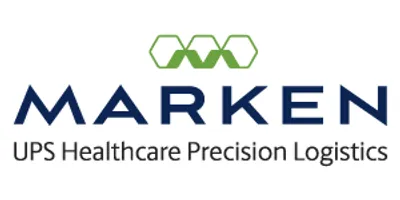
David Lee, vice president of alliance management and strategic accounts at Marken
CREDIT: David Lee
David Lee brings over 20 years of experience in logistics, supply chain management, and international business development to his role as vice president of alliance management and strategic accounts at Marken. He leads the strategic alliance management team, supporting the company’s top global clients, and plays a central role in pricing strategy, commercial decision-making, and initiatives that strengthen global operations. David is recognized as a pragmatic and forward-thinking leader, combining industry expertise with a passion for advancing cold chain logistics solutions that help healthcare innovations reach patients worldwide.
Q: Can you share a little about your career path and how your journey shaped your current work with central labs?
A: I’ve worked in logistics for about 28 years and spent 15 of those with a major international carrier. A client I supported at the time was one of the largest diagnostic and testing companies in the US, which was my introduction to working with central labs. Since then, I’ve continued to work closely with major central labs. These relationships, and the work itself, have shaped my career and kept me focused on what matters. We’re not just moving packages, we’re supporting patients. Every shipment represents someone waiting for a diagnosis or treatment, and our job is to make sure samples arrive on time and in good condition.
My experience has allowed me to drive innovation. One thing I’ve pushed for is sustainable, recyclable packaging to reduce EPS waste. I also helped build our operational excellence team, which investigates deviations and oversees corrective and preventive actions. For me, this is a game-changer. By getting down to the root cause of an issue, we can prevent it from happening again.
Q: What do you see as the most pressing challenges facing central labs, and how can lab leaders best mitigate these risks?
A: The trick for central labs is staffing and visibility of incoming samples. It’s not just about getting the right people in the right place—it’s knowing when samples will arrive. If deliveries are delayed, staff waste time waiting or miss testing windows.
That’s where visibility comes in. Labs are using e-requisition systems that connect barcoded vials to the patient, study, and shipment. When we can see where each sample is in the supply chain, we can give labs advance notice so they can schedule staff for when samples will actually be there.
Regulatory requirements are also evolving. A good example is the recent change to de minimis exceptions for shipments into the US. Previously, we didn’t have to make customs declarations for biological samples. Now we do. That means making process changes across multiple origins, countries, and studies, which is a huge undertaking. If you don’t get it right, you risk delays that can push samples out of stability and impact study timelines.
This is where precision logistics can make a big difference. At Marken, we use GPS tracking and proactive notifications to safeguard samples and support planning. Being part of the UPS network means we can also choose the best transportation option, whether that’s a commercial airline or a UPS flight, to move samples quickly and predictably. We stay ahead of regulatory changes and work with central labs to communicate what’s required—everything from updating documentation and invoices to ensuring the right information is declared at customs. We also build contingency and mitigation strategies to keep shipments moving.
Q: What improvements can central labs expect when precision logistics are in place?
A: Labs can expect accountability and on-time performance. We have a commitment that 99.5 percent of the time, samples are going to arrive within the allocated window. Using proactive tracking, real-time interventions, and advanced technology, from temperature monitors to GPS trackers, we protect sample integrity and provide reliable delivery, no matter where the lab is located.
Governance is another key element. Each central lab has a dedicated alliance manager who serves as a single point of contact, so they’re not chasing answers. This close coordination helps us address any service deviations and minimize disruptions. It’s about working together and understanding that things can happen.
We work with labs to make sure contact details, pickup locations, and customs documentation are correct. We also collaborate with clinical sites, many of which are unfamiliar with logistics processes, to explain requirements and ensure samples are ready on time. For highly sensitive studies, we provide hypercare monitoring with localized training and bespoke SOPs, so samples are handled correctly at every step.&
We’re also constantly thinking about innovation. For example, we’ve recently introduced our InfiniDI reusable shipper. Traditionally, dry ice shipments offered up to 96 hours of temperature control, meaning any customs delay required intervention. InfiniDI uses specialized packaging to keep samples in range for up to 140 hours, offering greater confidence and improved sustainability.
Q: How are AI and digital technologies improving specimen visibility and traceability?
A: Routing is the most complex part of shipping. We’ve implemented AI within our booking system to analyze airline reliability, flight performance, delays, and offload data to help us select the best routes.
In the past, we’d have someone manually track all that data. Now AI does it for us. The benefit isn’t cutting headcount, it’s freeing up our people to focus on higher-value work. Instead of spending their time manually routing shipments, they can concentrate on shipments that require extra care and think about how to improve our services for central labs.
We’re also investing in automation to make things easier for clinical sites. During study setup, we create a template linking samples with their storage conditions and destination. When a nurse enters the study ID, the system, as if by magic, automatically populates. All they need to do is enter the number of samples. The quality of data we’re getting from this means the output is far better, with fewer delays and issues.
On top of that, we use advanced software to provide real-time milestone updates for more transparency and accountability. It also builds a digital chain of custody for future quality reviews and audits.
Q: When selecting a logistics partner, what questions should lab managers ask?
A: I think the question labs should ask is, “What differentiates you from other logistics providers?” Look for expertise and a proven track record. You want a partner who understands this isn’t just another package; there’s a patient at the end of it. They should back this up with clear KPIs and be able to explain how they maintain quality and compliance.
Innovation is another key differentiator. You don’t want a provider who is sitting on their laurels. You want one that continually improves and thinks about the future.
Proactivity is also an essential differentiator. It means understanding the deep intricacies of sample transport, anticipating potential disruptions, and taking action early. For instance, if we know your patient is coming in on Monday and a storm is due on Tuesday, we’ll route the shipment around the storm. This proactive thinking prevents patients from having to return to the hospital and prevents labs from waiting for samples.
Q: Looking ahead, what innovations do you see shaping the future of central lab operations?
A: I think there are a few key areas that will really drive improvement. First is the work of our operational excellence team, which is vital for quality assurance. If we can mitigate issues ahead of time, we can not only improve report quality and turnaround time but also drive continuous improvement.
Another big step is integrating lab management platforms with courier transport systems. We’re close to doing this with a couple of labs. I think that will make a vast improvement in the site’s experience, because they won’t need to look for a courier website or think about logistics; they’re just using their platform. With this integration comes a secure chain of custody and visibility. Labs get real-time information and don’t need to rely on periodic updates from couriers.
Click here to discover more.





